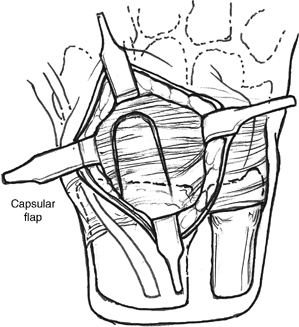35 Scapholunate Reconstruction with Dorsal Capsular Flap (Blatt Procedure)
Indications
Technique

Stay updated, free articles. Join our Telegram channel

Full access? Get Clinical Tree


35 Scapholunate Reconstruction with Dorsal Capsular Flap (Blatt Procedure)
Indications
Technique




